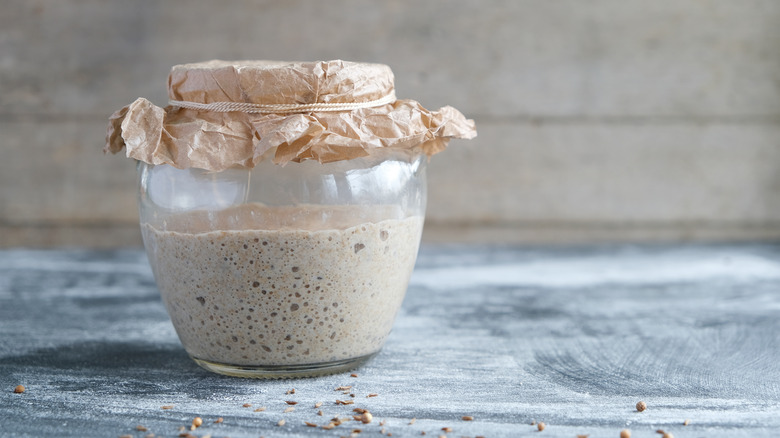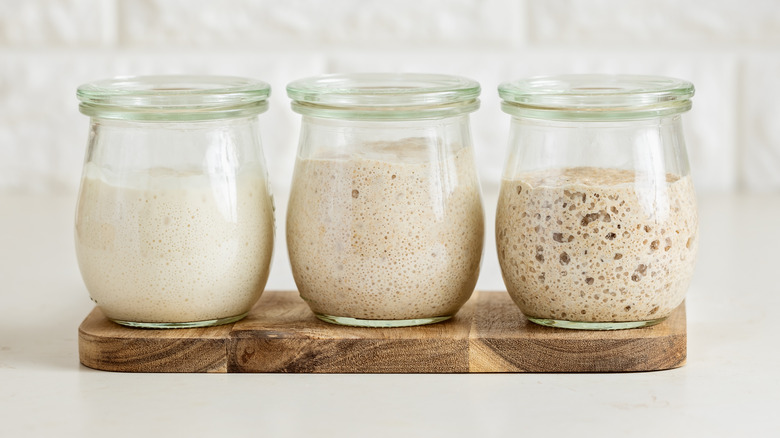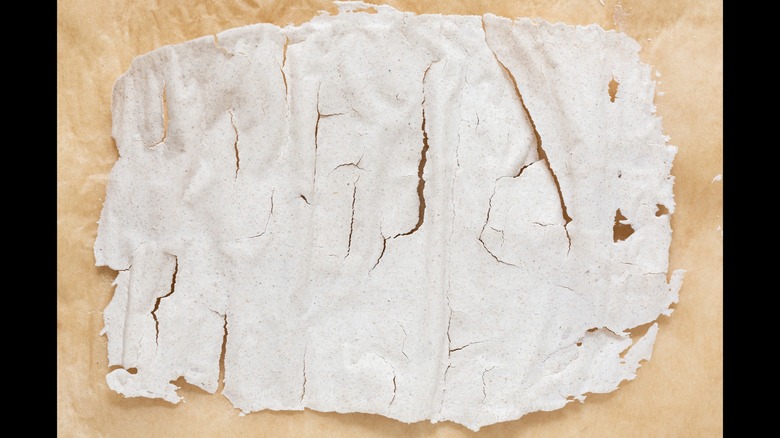The Best Way To Store Sourdough Discard
Tending to beloved sourdough starters has become something of a pastime for many in the 2020s. Now that folks are returning to more outdoor, social hobbies, baking a weekly loaf may not happen as often as it once did. That said, sourdough starter discard still must be dealt with, so what is the best way to store this precious resource? The answer is to store it like you would the sourdough starter itself.
A clear, straight-sided container is perfect for the job. You can see into the container without having to open it, and the straight sides allow you to estimate the growth (or not) of the discard more accurately. The lid of this container should ideally allow for air circulation but keep pesky bugs out. If the lid is airtight, then "burping" the container by regularly releasing the buildup of gas may be necessary. But, to control this buildup of gas, you can store the container directly in the fridge, as the cold temperatures will slow down the activity of the microbes, reducing their carbon dioxide output. You may still need to burp the container once a week — the fridge merely slows down the respiration of the yeast, not stop it entirely.
Sourdough discard is the same as sourdough starter
So why should we treat sourdough discard like sourdough starter? Because it is essentially the same thing. Discard is part of the sourdough starter that is discarded and unfed, but it contains the exact same ingredients, microbes, and nutrients as the starter it came from. Discard happens whether one is a newcomer or an old hand at making sourdough. However, you are likely to have more discard at the beginning stages of making sourdough, or you will have to handle an unwieldy amount of starter while building up the strength of the yeast. Many novice bakers make the mistake of baking with weak starters; just a little patience (and lots of discard) will help avoid that.
If you are worried that you will have too much discard to deal with, you can treat the discard as a backup sourdough starter because, again, discard and starter are the same thing. If, for any reason, your starter becomes contaminated with pink or orange mold or dies and does not rise during feedings, you can work on your discard, fortifying and feeding it to become your starter.
Keeping and using sourdough discard
There are many reasons to keep sourdough starter discard, but largely because there are many ways to use it. Even though the yeast in the discard may not be as active as the starter, there will likely be sufficient lactic acid present to contribute a tangy sourness to lots of baked goods. There are plenty of suggestions online to use up discard, from crackers to loaf cakes, cookies to pizza dough. If the recipe requires flour, and especially if it requires leavening as well, you can add a bit of discard for flavor.
If you will be away from your sourdough starter for an extended period, do not worry. Many folks report their starters surviving in the fridge for weeks, with just a little extra feeding upon return to get the starter back up to previous activity levels — which just means extra discard. And if it will be very long until your next bake, you can always dry sourdough starter for later.


